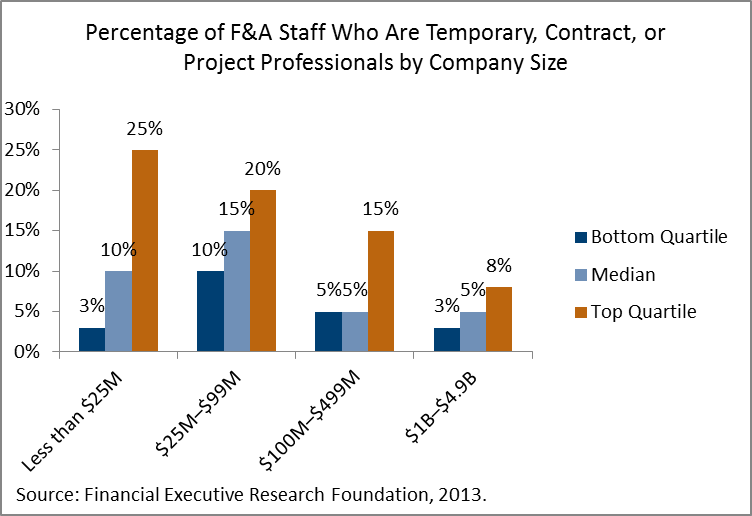In the ever-tightening market for skilled finance professionals, organizations have to compete for skillful, experienced candidates. With little name recognition and a lack of branding possessed by companies like IBM, smaller finance organizations are left behind in the competition for the attraction and retention of these employees. Such recruiting challenges have been met with an unexpected solution: temporary workers.
In a recent report, Financial Executives Research Foundation (FERF) and Robert Half unveil that more and more finance and accounting departments are operating with less full-time employees (FTEs) and are instead hiring skillful, analytical finance professionals for specific projects to take on during their organizations’ peak seasons. While this exercise is increasingly utilized by smaller and mid-size firms, it is also widely practiced by larger organizations (Figure 1).

Figure 1
As a result, organizations are afforded more flexible staffing arrangements and can cover the demand for both project-specific expertise and employees who can perform broader, more general services.
It’s also interesting to note how organizations which inhabit the same size buckets vary in the use of interim finance function specialists (Figure 2).

Figure 2
Here we can see that top-quartile organizations[1] consistently depend on contract staff.
Additionally, given that the labor-intensive financial reporting and AP functions are allocated the greatest amount of staff resources in the financial organizations surveyed, this trend may free up personnel that can be funneled instead to other functional finance areas with more value-added services, such as performance analysis and decision support for operating managers.
Regardless of size, organizations that are facing or foresee high peaks in workload and low troughs of competitive recruitment would be smart to consider the benefits of temporary workers.
[1] In this report, the top quartile is the performance level above which 25% of all responses occur. The bottom quartile is the performance level above which 75% of all responses occur.